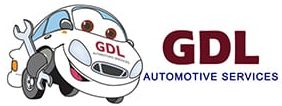For years now we have zoned out whilst vehicle manufacturers spend millions of dollars on very average television commercials. Watching a successful business man in a suit appear to have his entire life complete upon the purchase of a Nissan Maxima is somehow supposed to convince us all that we too, need to buy an average box of a vehicle in order to complete our lives and live for eternity without a worry in the world.
The reality is that for a good decade the car selling space on free to air television was so poorly utilised that we as the consumers have completely zoned out to it and very rarely listen. Car manufacturers have realised this and are slowly changing the strategies they use, some more successful than others. Trying to convince the world that we should stop calling a Mitsubishi a “bit too shitty” in exchange for the cheesy line of “its a mitsy” may actually work but will not change the fact that a Mitsubishi is in fact, rather shit.
As we have zoned out for the past decade it’s amazing that we are all fairly familiar with sales lingo. Thirty thousand months interest free (unless you actually drive your car) and warranty statements like “a billion kilometres or four days which ever comes first”. We have also come accustom to the lettering PDS or Product Disclosure Statement that is basically a document allowing the manufacturer to behave like a sixteen year old babysitter and walk away from all responsibility. With all this crap that we all know is intended to convince us to buy the said chunk of metal, we also hear about the ANCAP safety rating.
We hear the 5 star rating and pull that little frown and nod, you know the look of thats not half bad, when in fact you are completely ignorant to what your nodding at. Well here it is we will break it down for you.
ANCAP stands for Australian New Car Assessment Program and was founded in 1993.
We have all assumed that the higher the star rating the better and we have all assumed correctly. The highest vehicle star rating is 5 and and lowest is 1. Some very quick research and we found that very few vehicles make it into the one star box. The only ones we could find is the Proton Jumbuck (a mini ute).
From the ANCAP website:
ANCAP safety ratings are published using a rating system of 1 to 5 stars. These star ratings indicate the level of safety a vehicle provides for occupants and pedestrians in the event of a crash, as well as its ability – through technology – to avoid a crash.
ANCAP safety ratings are determined based on a series of internationally recognised, independent crash tests and safety assessments.
In all physical crash tests, dummies are used to measure the forces and likely injuries a driver, passenger or pedestrian may sustain during a crash. Observations are also made on the displacement of dummies during the crash, as well as the structural impact on the vehicle’s occupant compartment. Vehicles must achieve minimum scores across all physical crash tests (for each ANCAP safety rating level), as well as meet minimum requirements for the inclusion of safety equipment and technologies.
ANCAP crash tests are conducted on new passenger and light commercial vehicles entering the Australian and New Zealand markets with each model assessed under identical testing standards and conditions. ANCAP safety ratings can be used to compare the relative safety between cars of similar mass.
To achieve the maximum 5 star ANCAP safety rating, a vehicle must perform to the highest level across all crash tests and assessments.
The films released by ANCAP showing the testing are well worth looking at. With a level of empathy involved you can quickly see that even with a five star rating a vehicle involved in a serious crash is still going to do a fair amount of damage to the occupants within the vehicle. However if you then compare that to a one star vehicle, the odds of surviving this are slim to none. The clips can be viewed on the ANCAP website here.
Also note worthy is the vehicles that pass at a five star level still have areas that are colour coded in yellow. Yellow indicates what ANCAP consider to be “acceptable”. This is based off a front end collision at 64km/h. The text on the website states that the legs and chest of the passenger “show slight chance of serious injuries”.
We’re not trying to be critical of the testing procedure or the safety of these vehicles but merely pointing out that even a five star vehicle can result in serious injures to the chest area. I’m no doctor but serious injures in the chest department makes me believe the chance of death is still relatively high.
Our advice with this is to always try and buy vehicles with five star ratings. They are obviously better than the counterparts with lower ratings when it comes to safety. However don’t be of the belief that many are, that a five star rating is a guarantee of survival in a crash.
Warriewood
-
Unit 3, 13 Ponderasa Pde
Warriewood NSW 2102 - 02 9979 5933
Hornsby
-
2/ 27 King Road
Hornsby NSW 2077 - 02 9987 2818
ANCAP Safety Ratings Explained

Would You Like To Speak With The GDL Team?
Simply choose the option below that suits you best.
OR
Our Locations
Warriewood
3/ 13 Ponderasa Pde
Warriewood NSW 2102
02 9979 5933
Hornsby
2/ 27 King Road
Hornsby NSW
2077
02 9987 2818
Our Services
Follow Our Socials
Our Locations
Warriewood
3/ 13 Ponderasa Pde
Warriewood NSW 2102
02 9979 5933
Hornsby
2/ 27 King Road
Hornsby NSW 2077
02 9987 2818
Our Services
© Copyright GDL Auto 2022 | Website & Marketing By GREENhouse Media
© Copyright GDL Auto 2022 | Website & Marketing By GREENhouse Media
